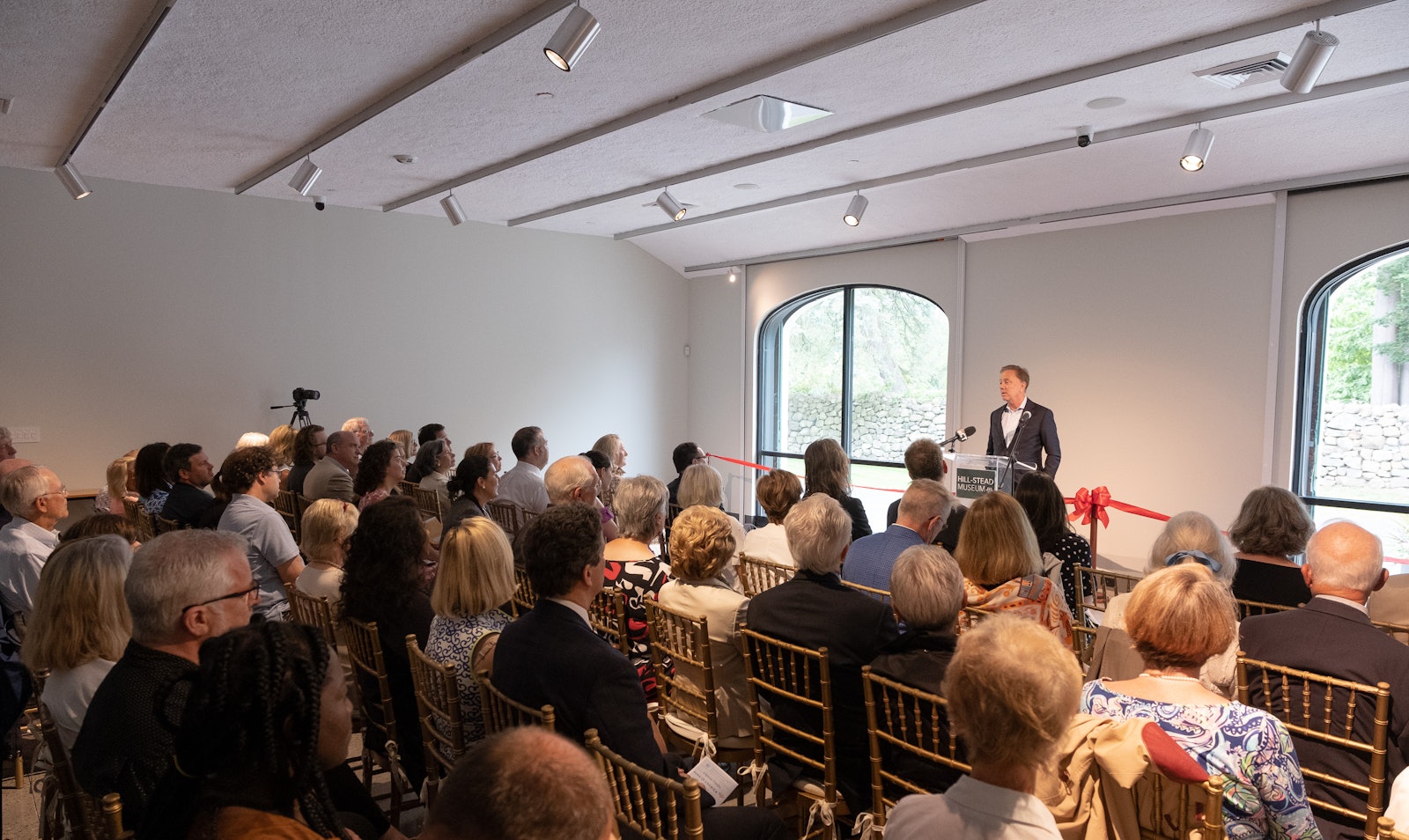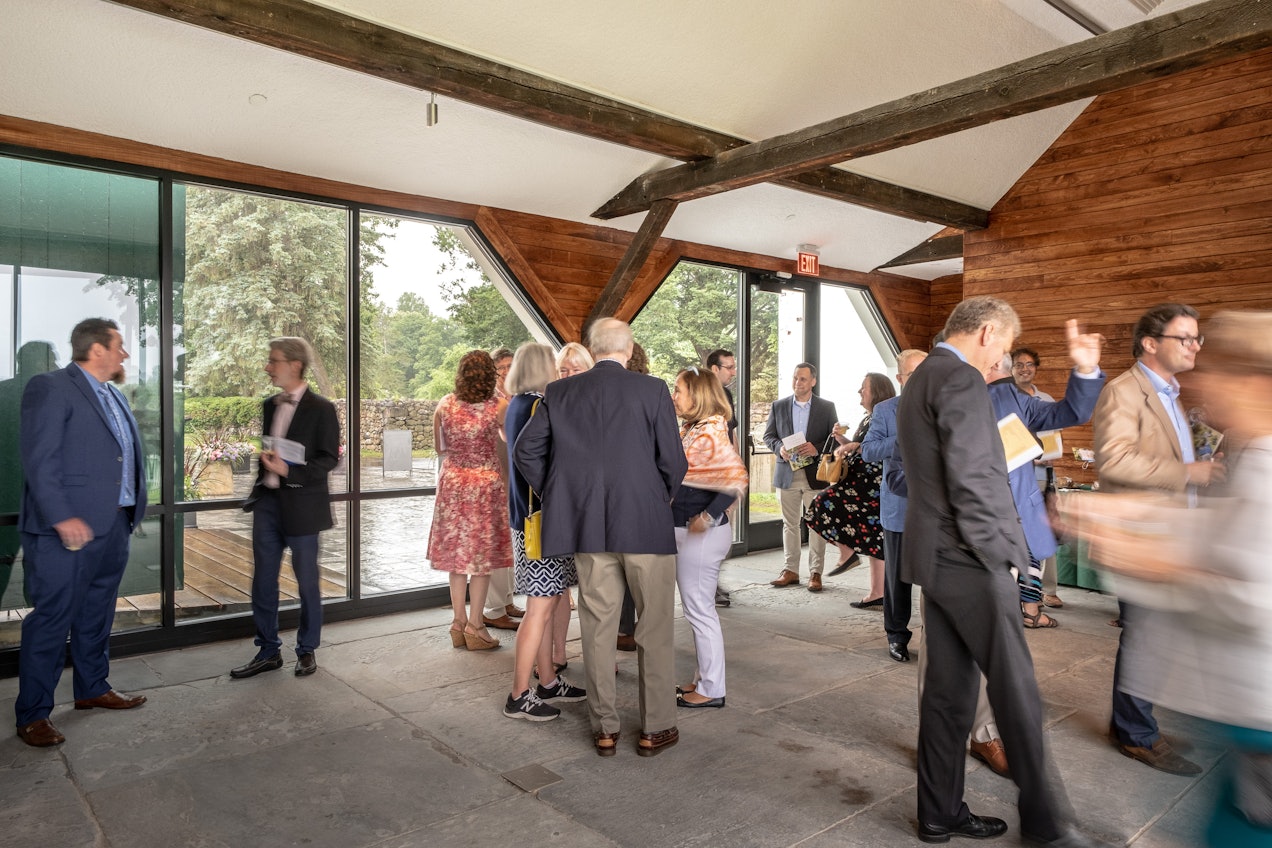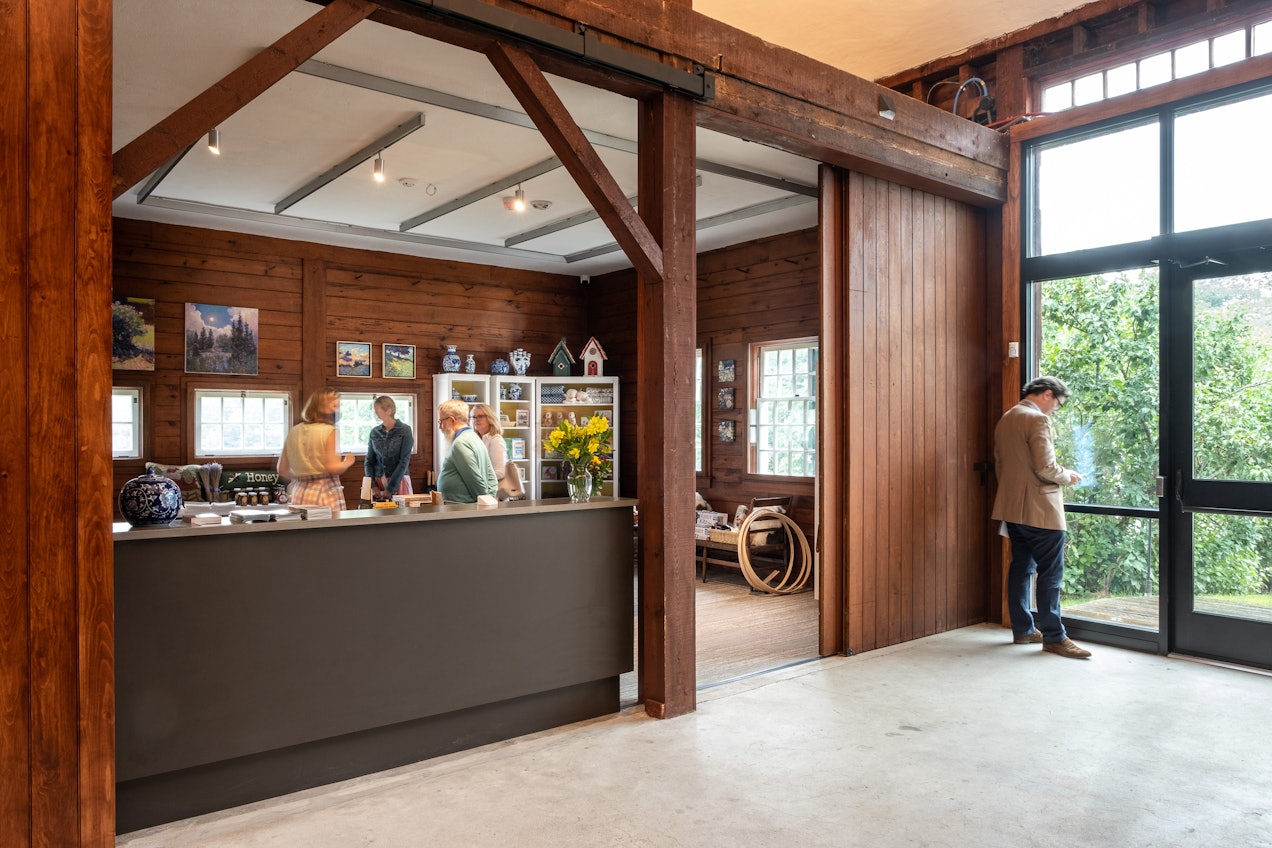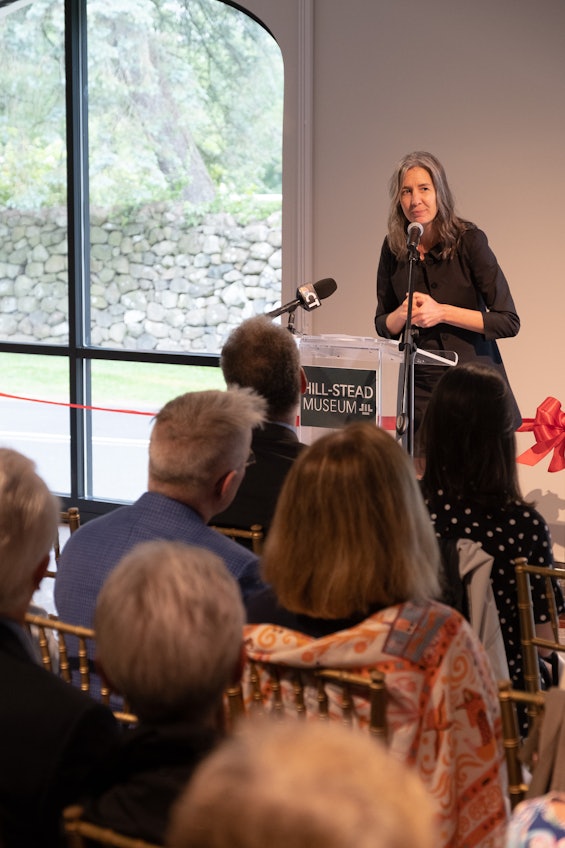Ribbon Cut at Hill-Stead Museum Visitors Center
Historic Barn Complex Adapted to Display Priceless Works of Art
Centerbrook Architects joined Governor Ned Lamont to celebrate the opening of the Visitors Center at the Hill-Stead Museum in Farmington, Connecticut. The project adapted an historic stable barn and carriage house complex for visitor services and exhibitions at the bucolic estate.
Conceived by the pioneering early 20th century architect Theodate Pope Riddle, the 152-acre historic property houses her family’s collection of furnishings and Impressionist art, including masterpieces by Monet, Degas, Picasso, and Whistler, as well as extensive gardens and pastures. The 7,000-square-foot Visitors Center includes modern environments for the display of art and antiquities as well as indoor and outdoor amenities to enhance the visitor experience.
“The key to this project was enhancing visitor reception and flexible exhibition spaces while respecting the distinctiveness of Theodate Pope Riddle’s architecture,” said Chad Floyd, FAIA, Principal-in-Charge. “Our renovations allow Hill-Stead to accommodate more visitors while improving the quality of their experience,” he added.
“We are going to bring this space alive with exhibitions and programs. We very wisely made it a multi-purpose space for performances, lectures, and workshops,” said Anna Swinbourne, Executive Director of the Hill-Stead. “We finally have a space where we can bring people together year round.”
Realized in collaboration with the State of Connecticut Department of Economic Community Development and the State Historic Preservation Office, the new facility preserves historic outbuildings that originally contained stables, carriages, automobiles, and farm equipment. Centerbrook took care to introduce life safety systems and finishes while preserving the building’s outward appearance.
“We managed to make what on one’s first arrival might appear to be no alterations,” said Charles G. Mueller, AIA, Centerbrook’s Project Manager. “But our sensitive yet dramatic transformations to selected interior spaces allow Hill-Stead to expand its exhibit offerings with galleries that meet museum-level standards for light, temperature, and humidity control,” he said.
“The key to this project was enhancing visitor reception and flexible exhibition spaces while respecting the distinctiveness of Theodate Pope Riddle’s architecture.” Chad Floyd, FAIA, Principal in Charge
We're using cookies to deliver you the best user experience. Learn More








